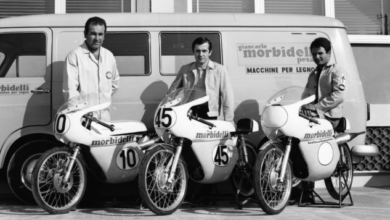Survey: Monthly e-commerce sales varies widely
By Neil Pascale
Editor
Multipoint store owner Lance Cherry fits into the most common group of U.S. dealers in terms of average monthly sales from e-commerce.
His Twin County Motorsports operations in Virginia and North Carolina sell somewhere between $3,000-$10,000 per month online, something 29 percent of dealers who sell online match, according to a national survey.
The fact that 29 percent makes up the single largest group of dealers shows the disparity in e-commerce revenue being generated by U.S. dealerships. For example, the national survey conducted by marketing research firm Irwin Broh & Associates revealed that more than a quarter of dealerships make $500 or less per month in online revenue. But 21 percent say their monthly online revenue meets or exceeds $60,000.
Clearly, the interest in pursuing e-commerce varies widely among U.S. dealers, a fact Cherry hints at in discussions about his own business.
“The only thing I can say about e-commerce: If I didn’t have to do it, I wouldn’t,” said Cherry, who owns two multi-line metric stores. “It’s a very involved part of the business.
“But I do think we have to continue to grow that market because I believe that is going to be a part of our industry. I kind of look at it as it’s not something we choose to do, it’s something we have to do.”
It’s also something that appears to be an area of opportunity for powersports dealers. Retailers on a national level report their e-commerce revenue represents 3.5 percent of their total sales, according to the U.S. Census Bureau. That percentage has been growing for at least the past four quarters.
The biggest majority of powersports dealers, 39.5 percent, say e-commerce represents just 2 percent or less of their total revenue, the survey found. Another 21 percent are closer to the national retail average, making between 3-5 percent of their total revenue from online sales.
“It’s a great way to move merchandise,” John Miller, owner of Marienville Power Sports, Marienville, Pa., said about the Internet. Miller says e-commerce sales have become a way to augment his store’s sales during traditionally slow times, which come when the ATV/snowmobile trail he’s near closes down.
“You can see what’s going to happen down the line,” Miller said of the popularity of e-commerce. “It’s going to get more popular rather than less popular for the average guy.”
Part of growing e-commerce will mean converting more Internet leads into actual new unit sales. The national dealership survey found approximately 21 percent of all leads are converted into sales. However, again there was quite a disparity between dealers. Approximately 52 percent of dealers said they only converted 10 percent or fewer leads.
“It’s response time,” Chuck Lewis, the co-founder of Channel Blade Technologies, a provider of online marketing, lead management and sales education programs in the powersports industry, said about converting leads into sales.
“If I’m in a purchase mode, it’s going to be the person who gets to me quicker, informs me, incentivizes me to get them into their showroom. I went through it with a car recently – it was not a great experience.”
The experience can be infinitely better if dealers can ask themselves a couple of questions.
“Is it process driven? Do you have a follow-up strategy?” Lewis asked. “Those things make a big difference (in converting leads). And there’s a vast difference between a dealer that has been trained and not been trained.”
Another key is ensuring salespeople respond to, and track, all leads.
“Everyone wants to gravitate toward what they perceive as that hot lead,” Lewis said. “Well you should look at every lead that comes in as a hot lead. It’s someone who has taken the time to inquire to your dealership. Respond to them.”
Another potential e-commerce area of growth: Using it as a means to more rapidly turn aged inventory. Thirty two percent of dealers frequently do that now, the national survey found. Another 19 percent do that occasionally. But 48 percent of dealers either seldom or never sell aged inventory on their Web sites.
For those dealers that do sell aged inventory on their Web sites, about a third of them wait four months or less to place parts and accessories online with a discounted price. Another third wait until six months before discounting it. The remaining 33 percent don’t place it online with a discounted price until they’ve had the product at least nine months, if not longer.




